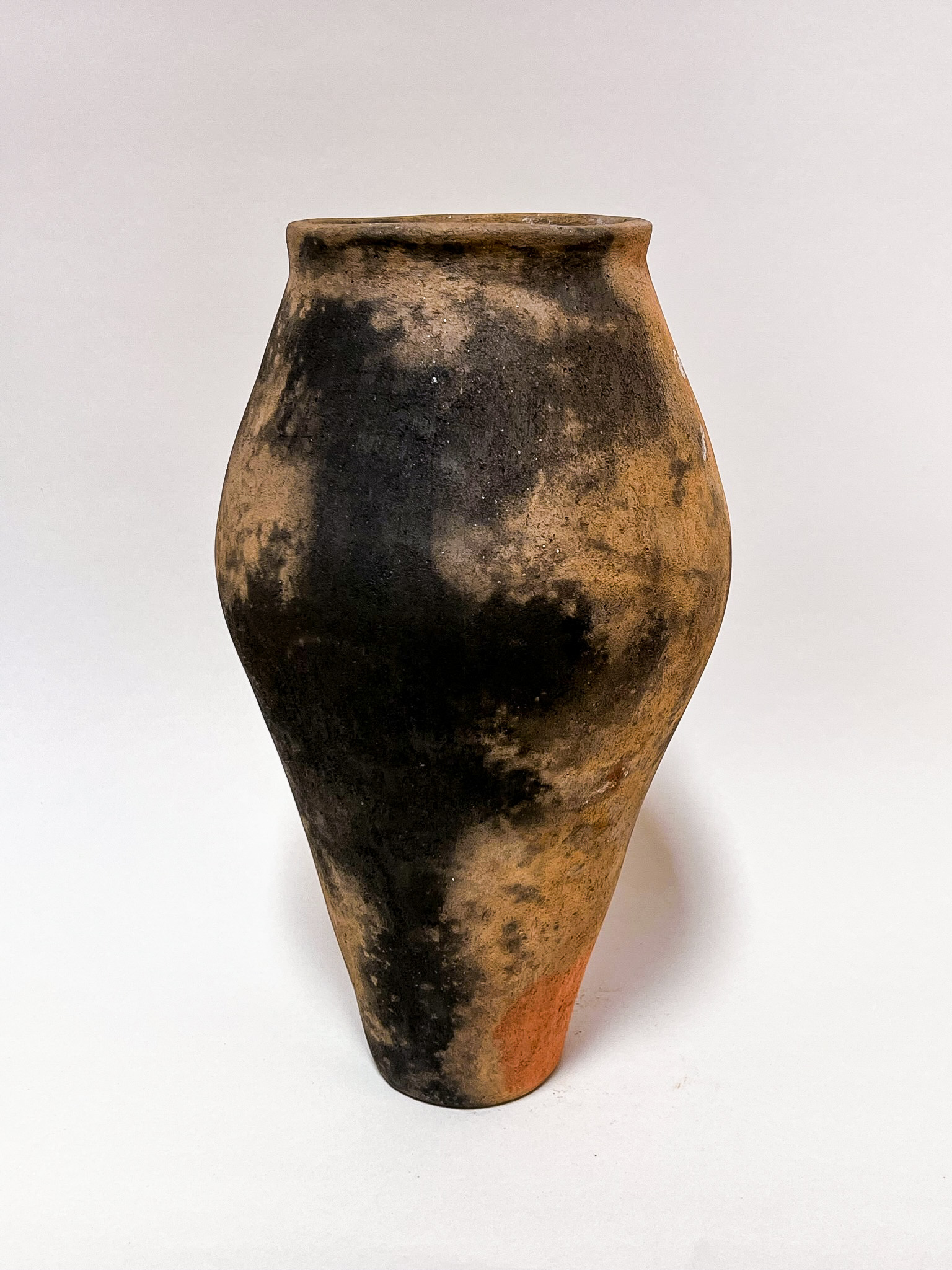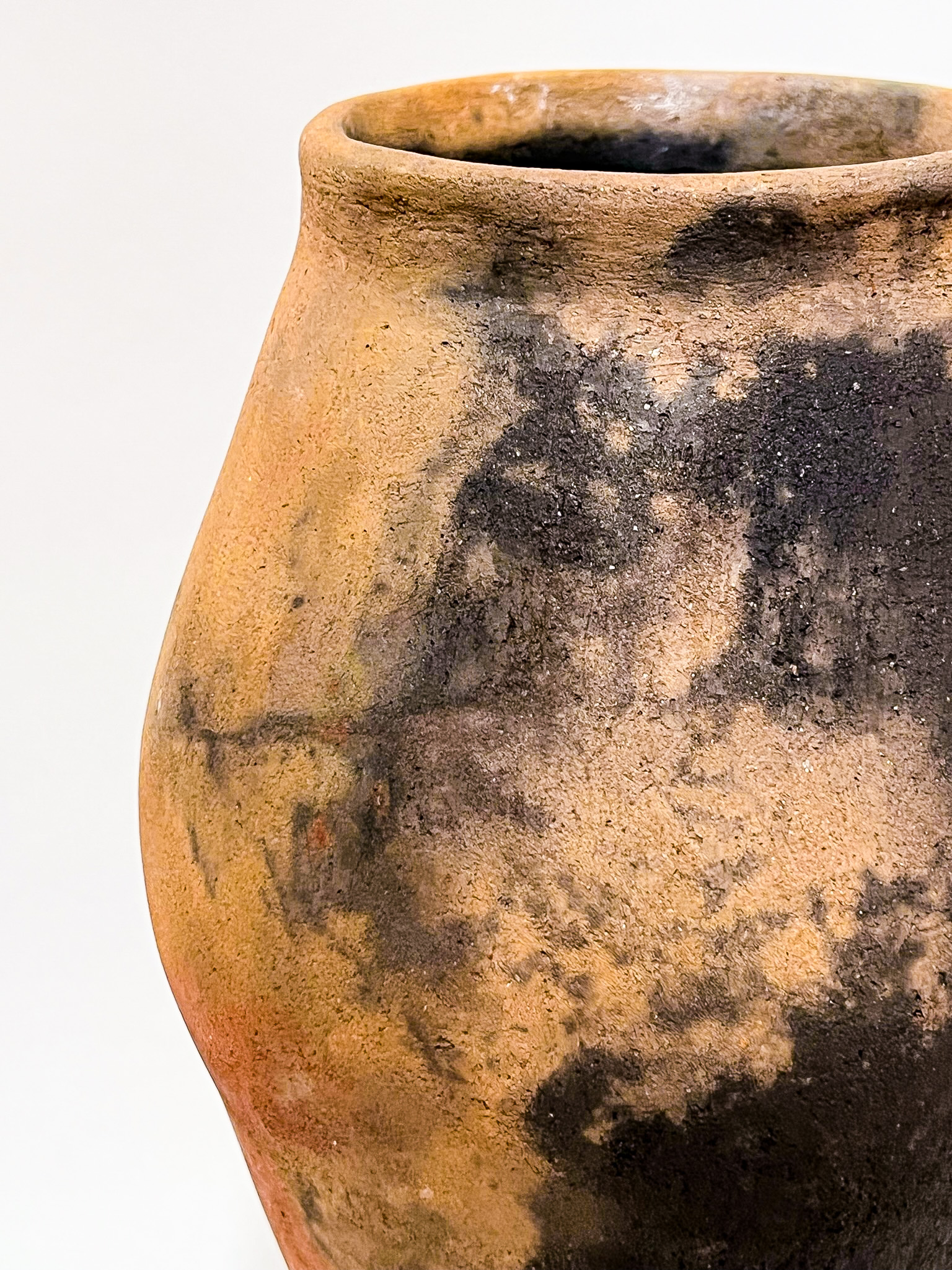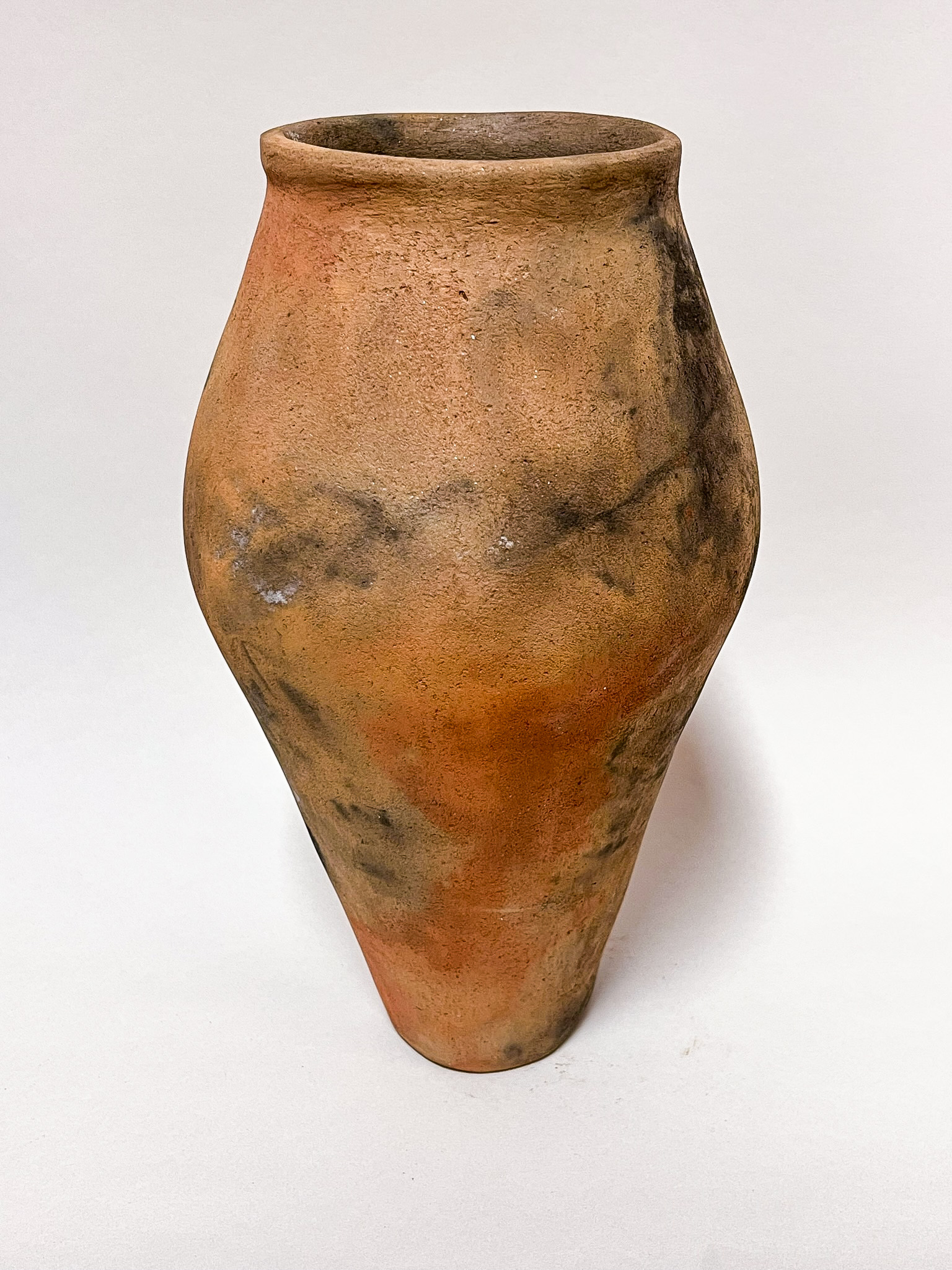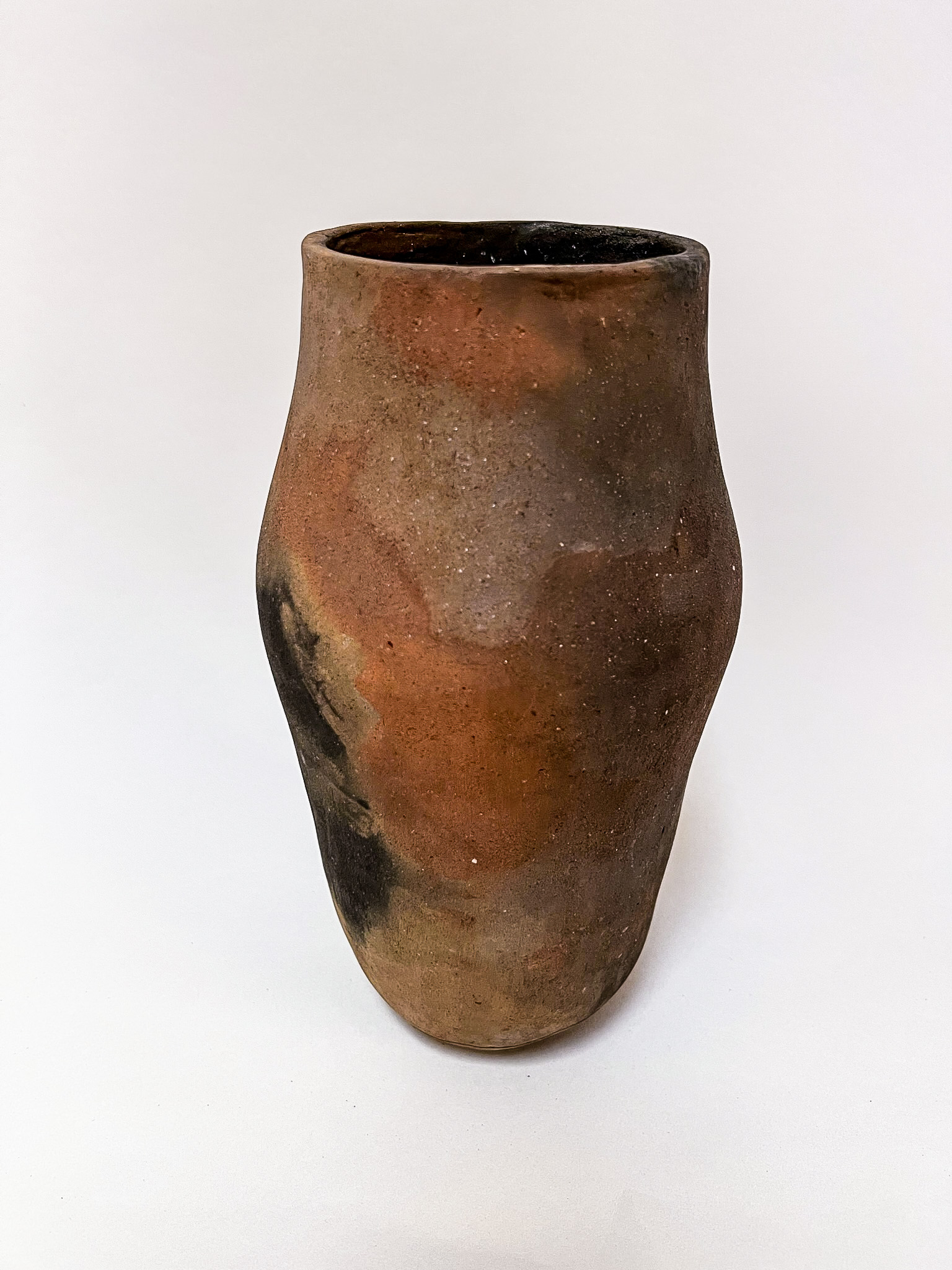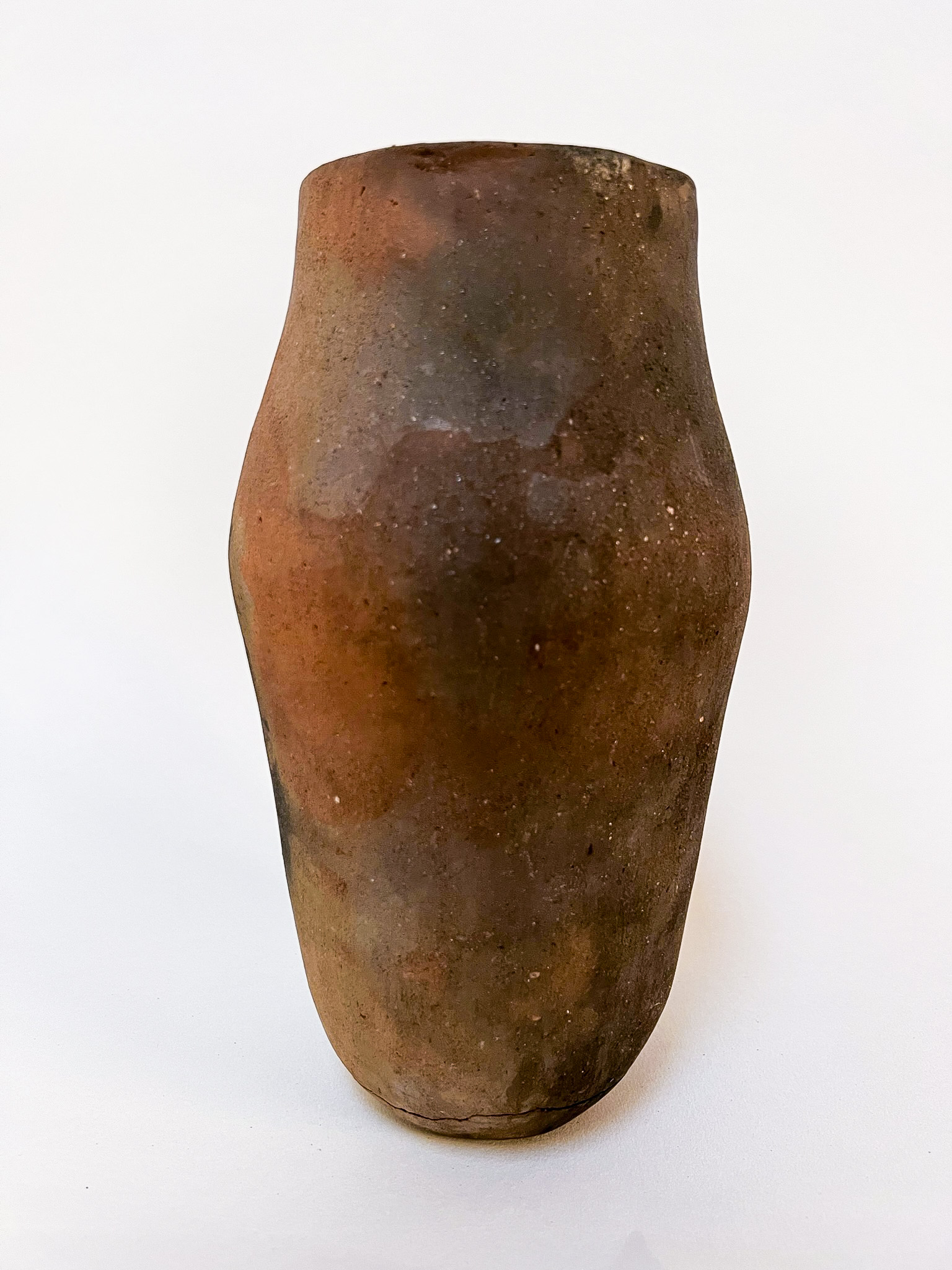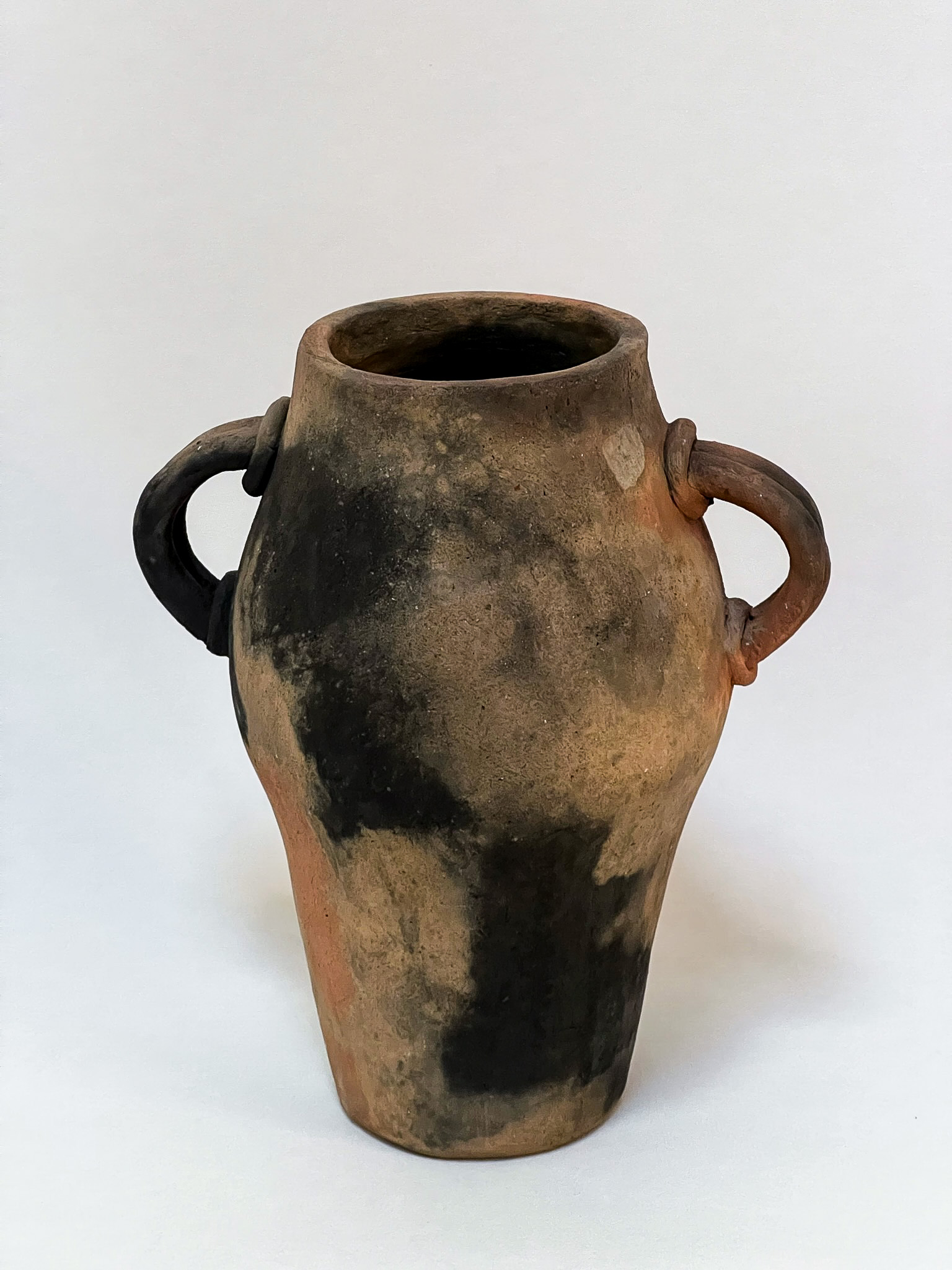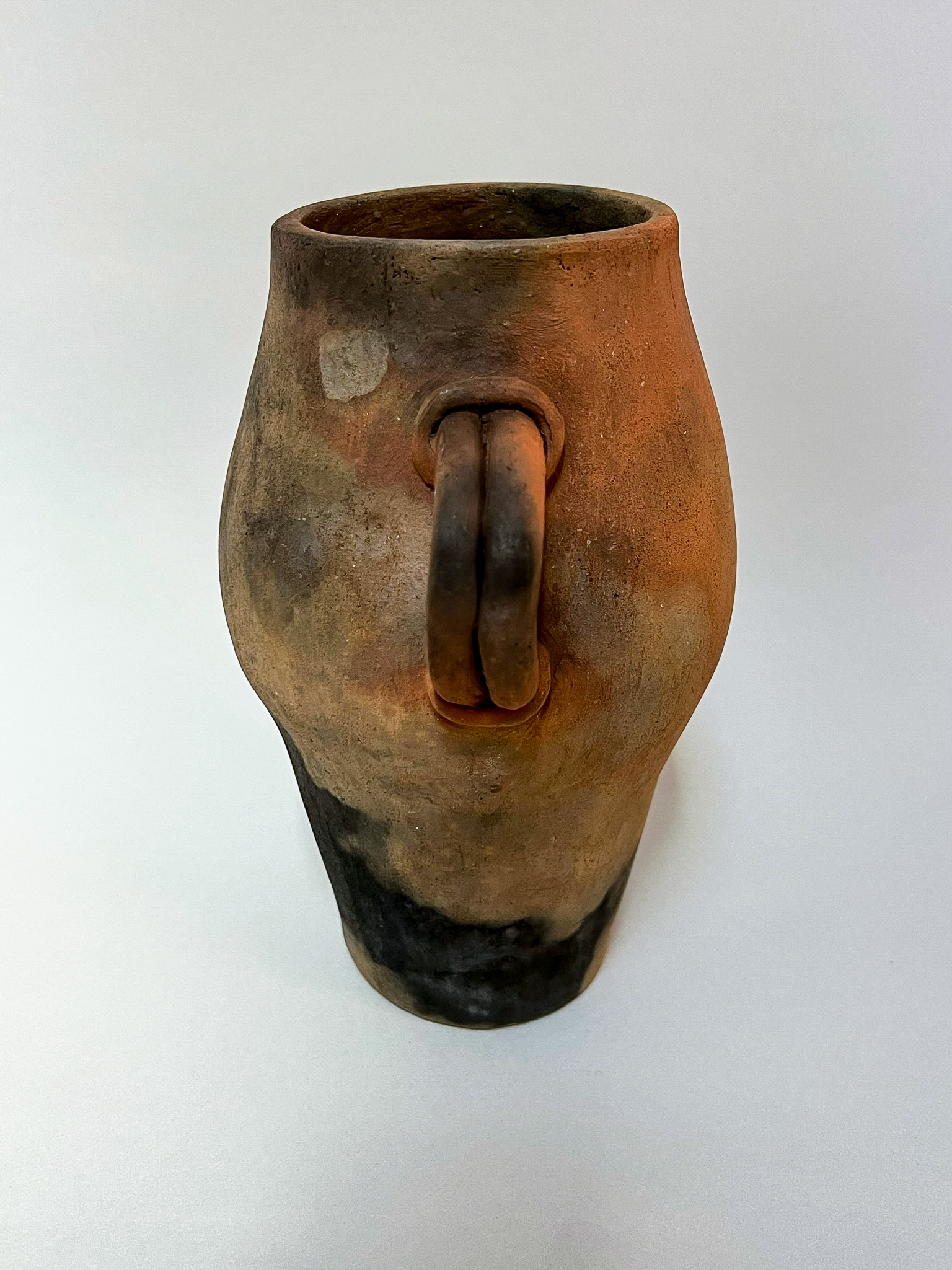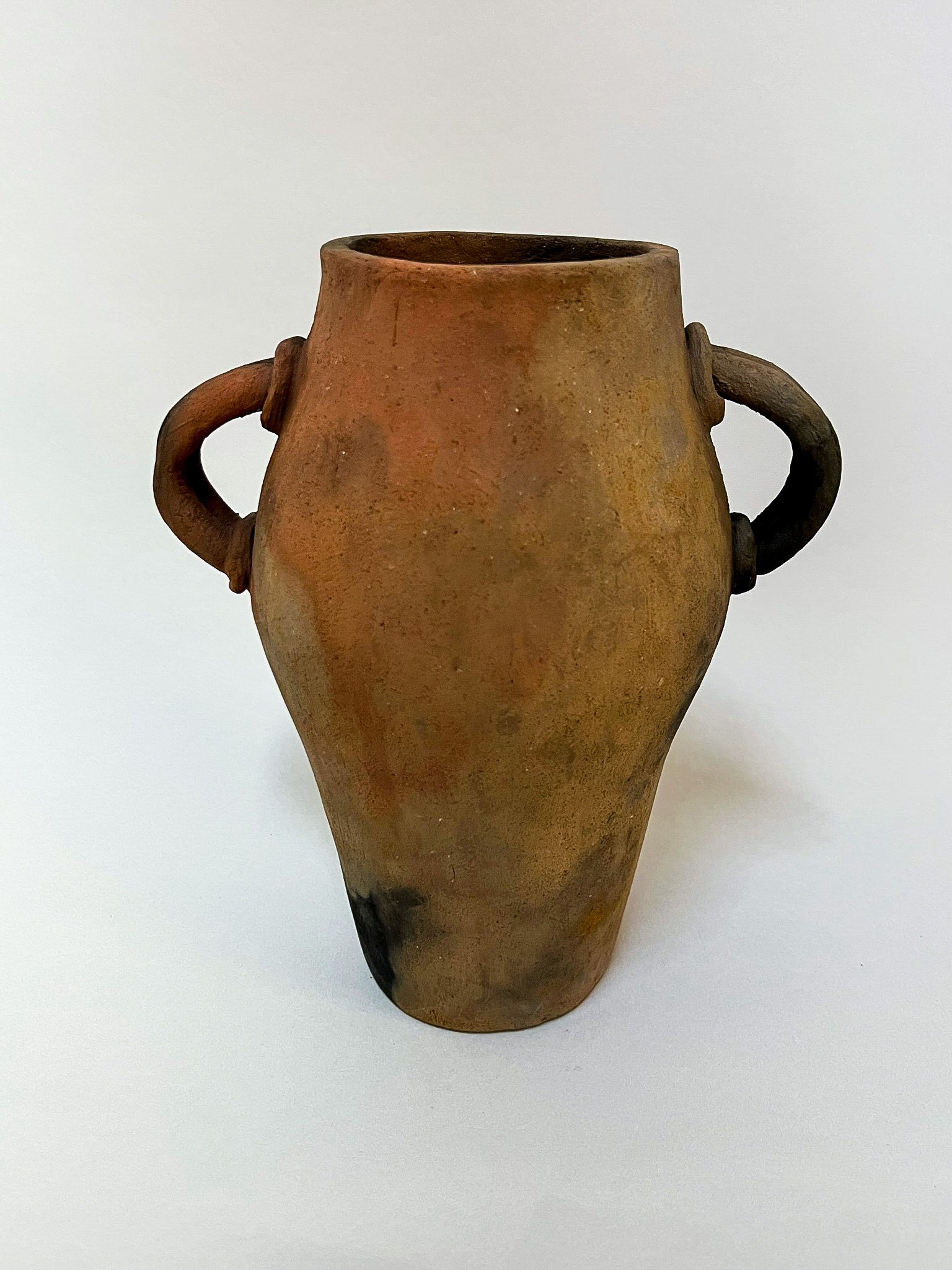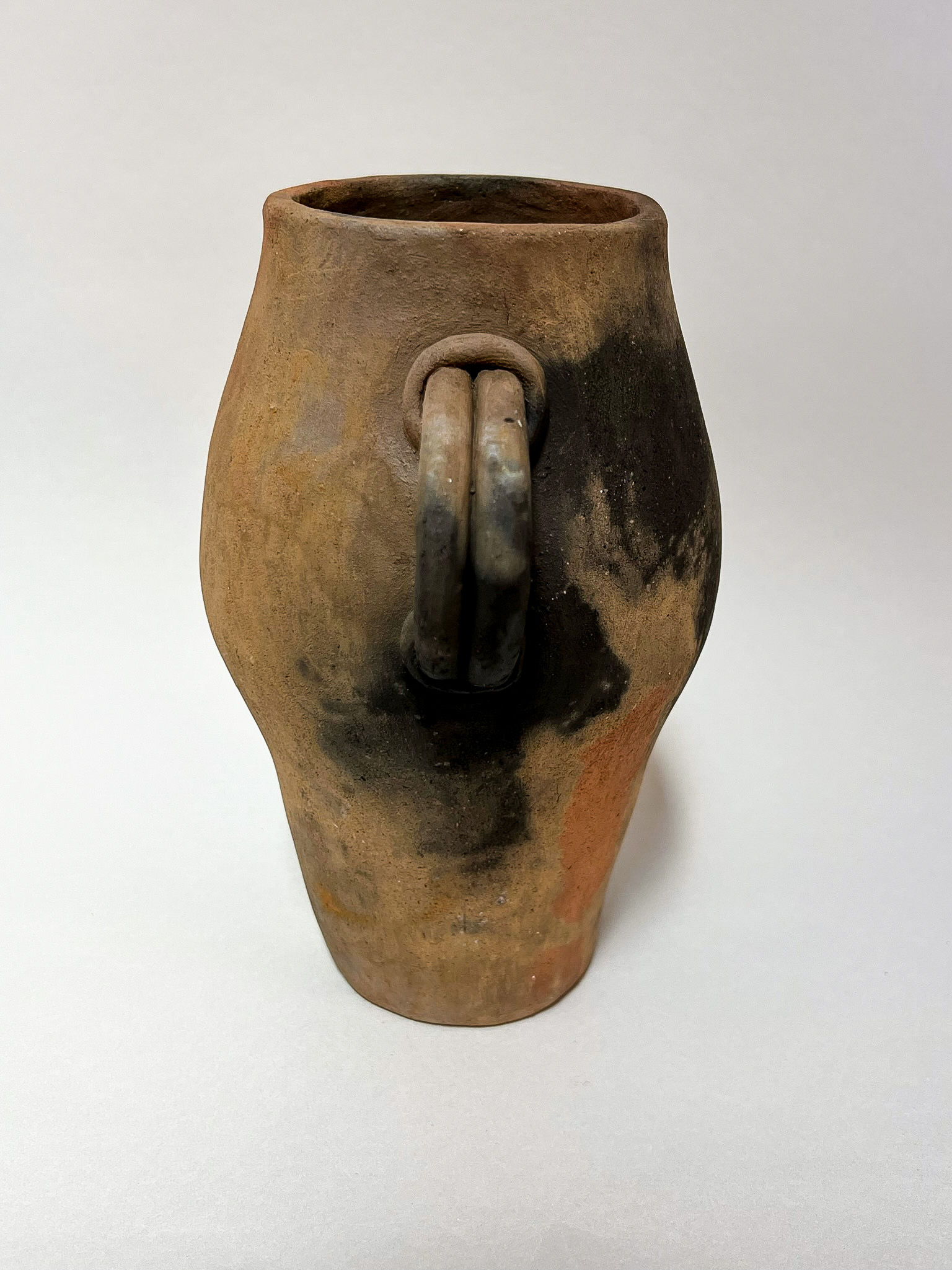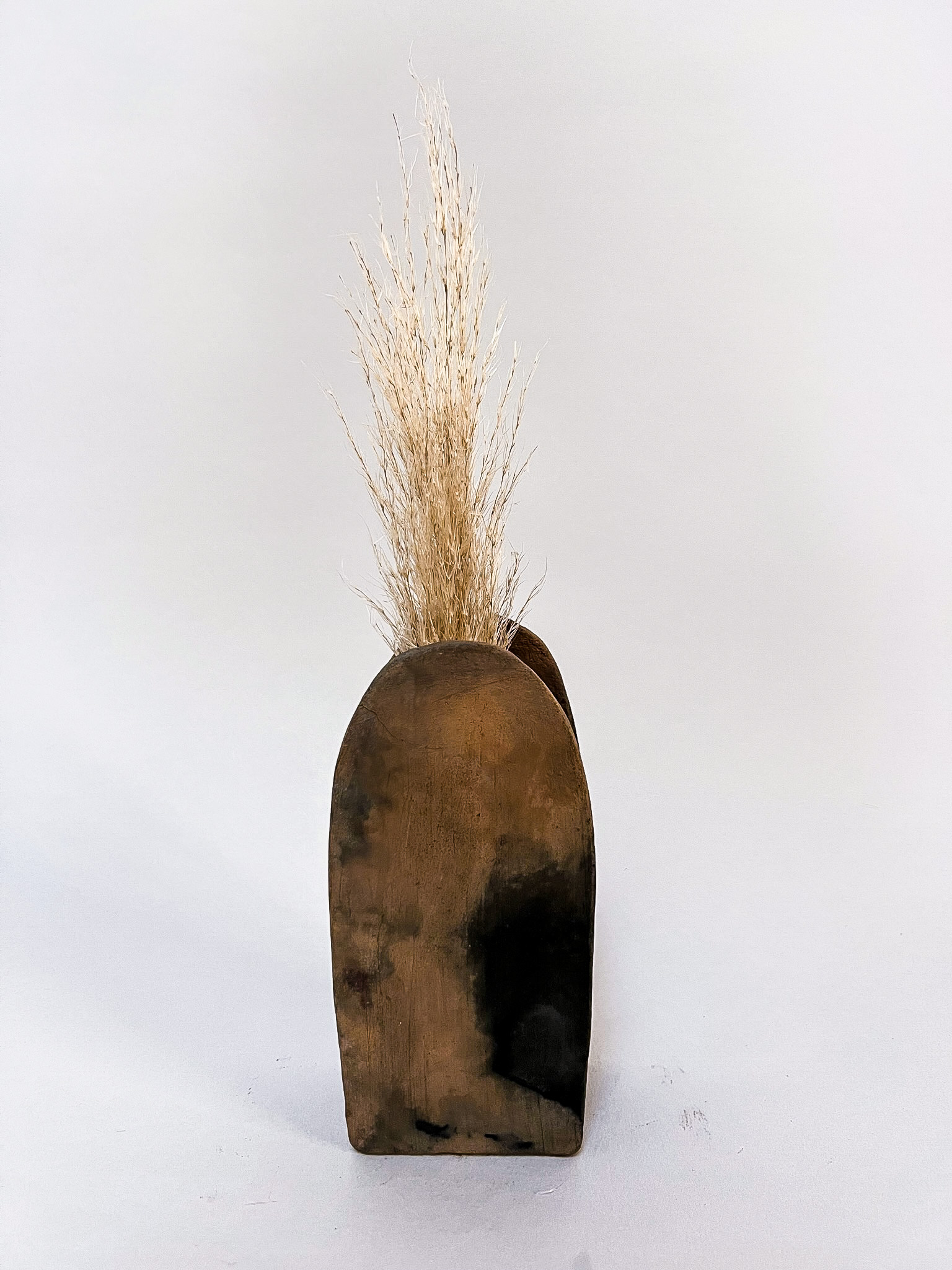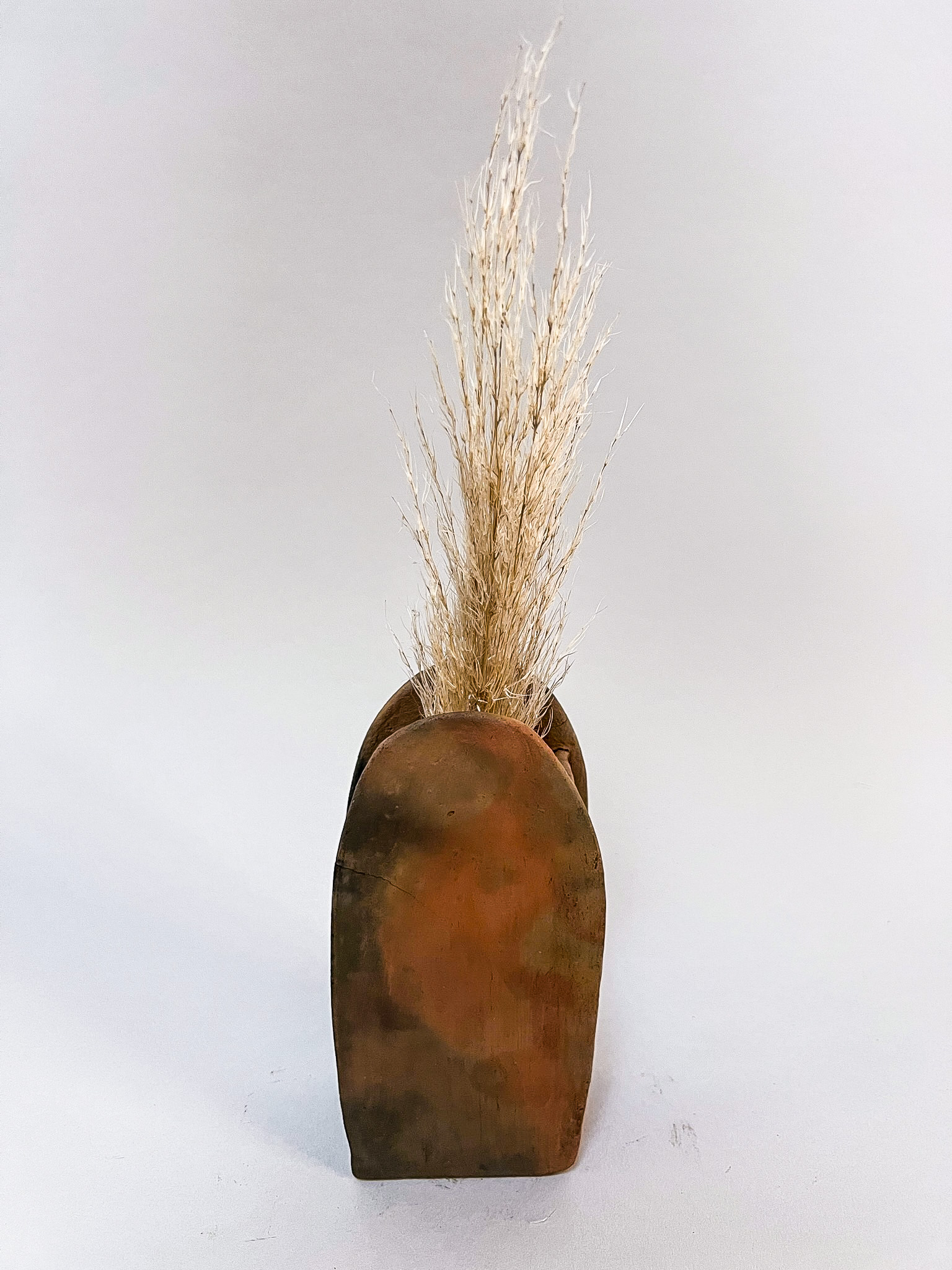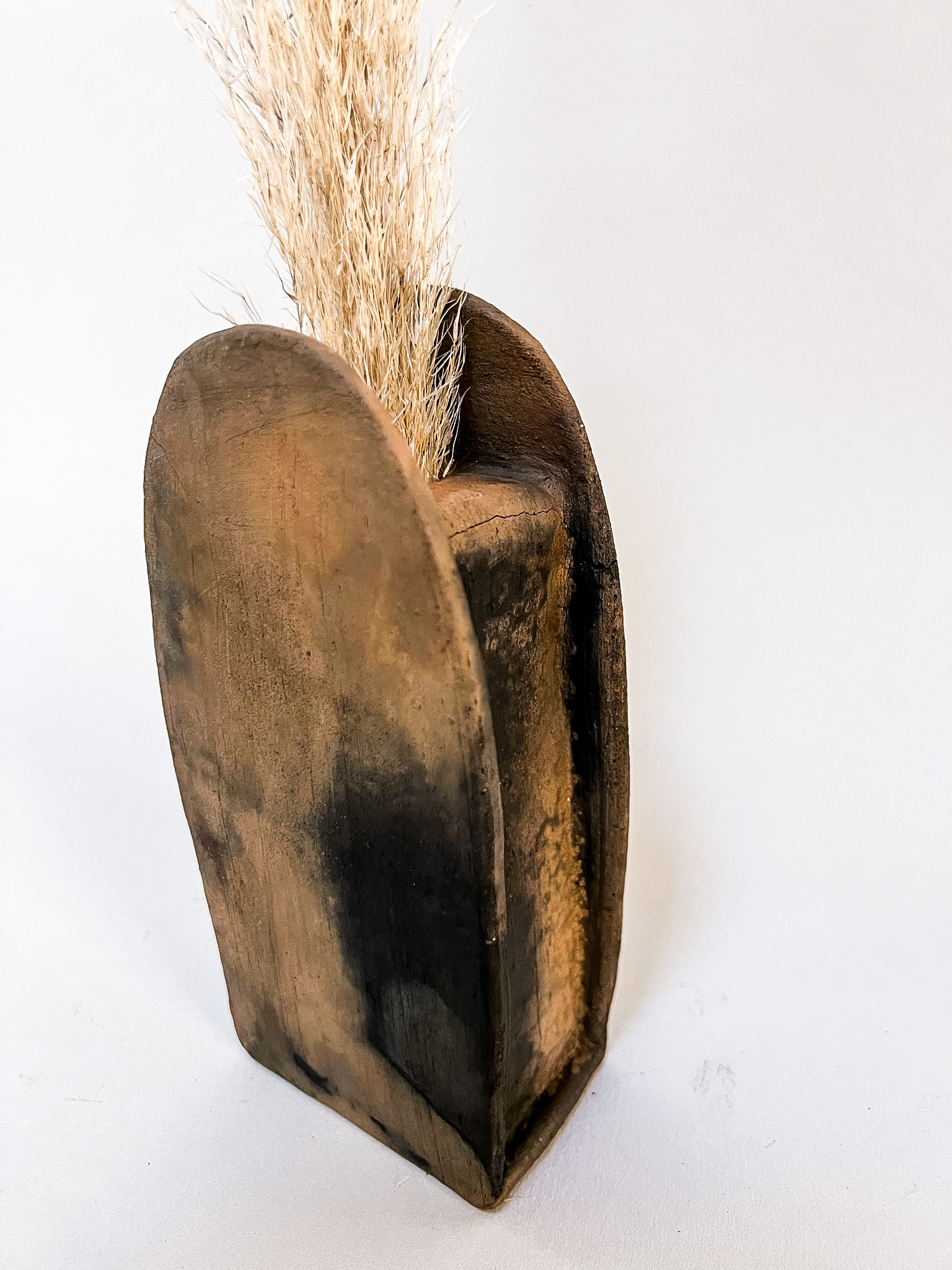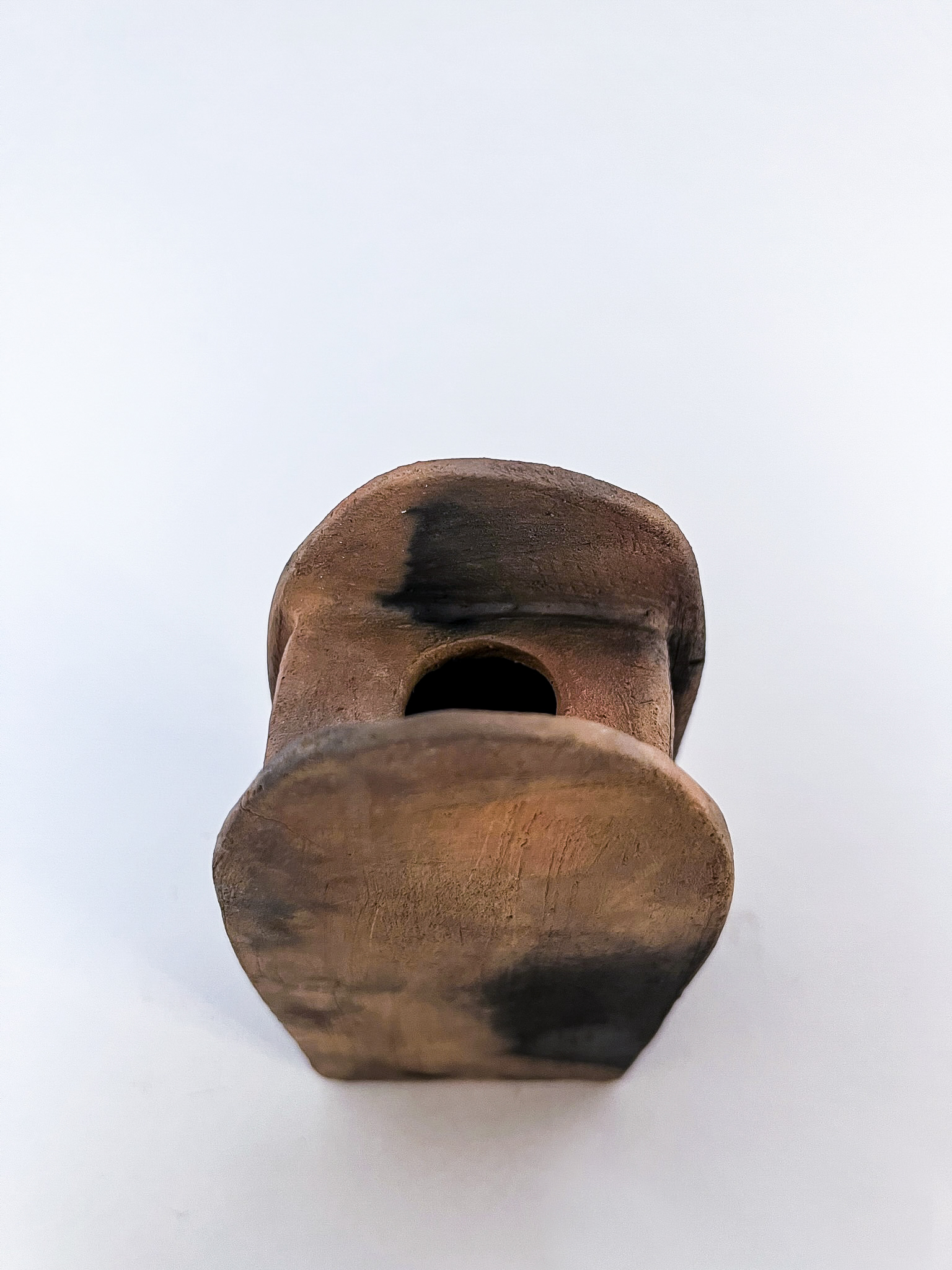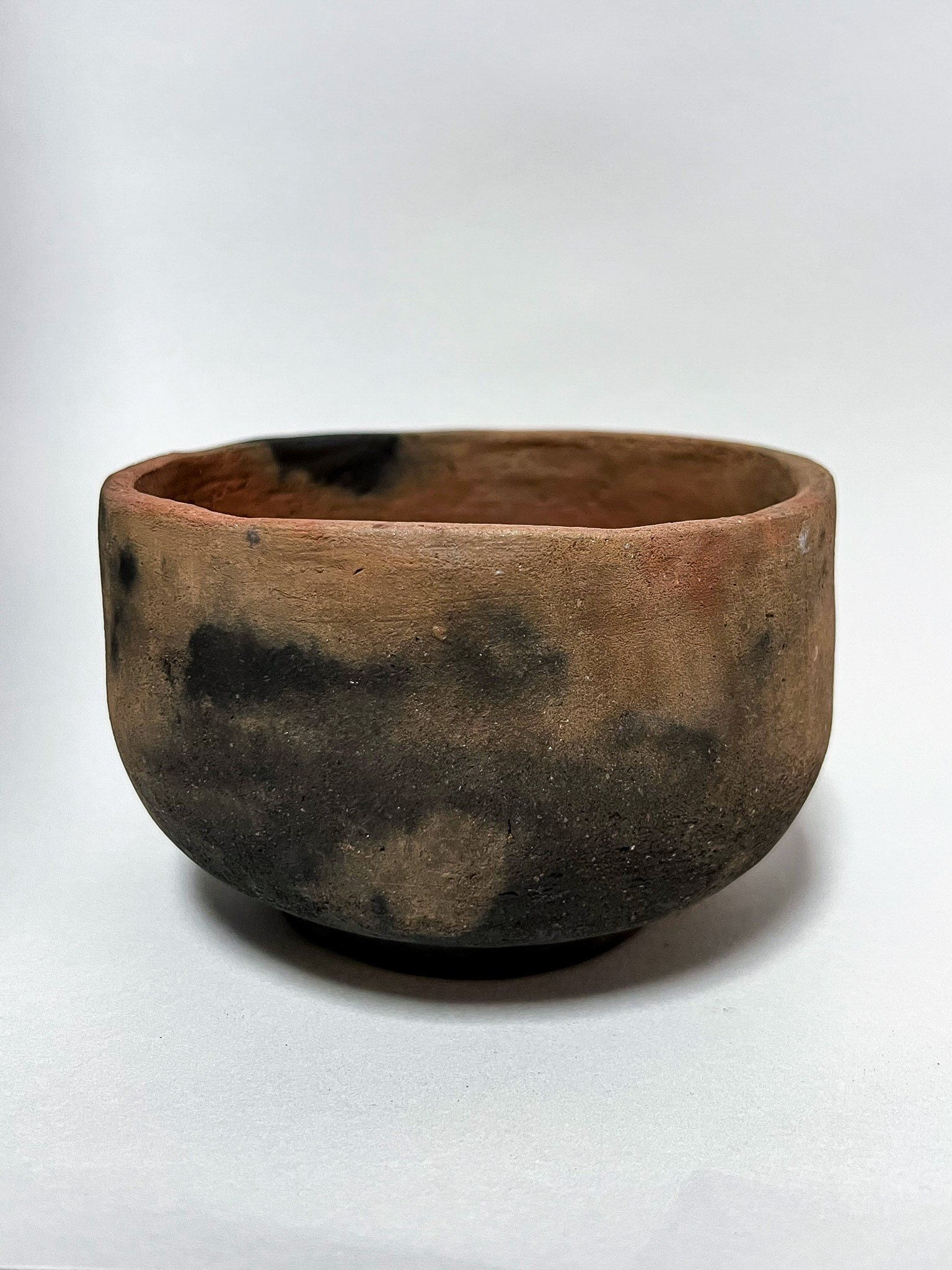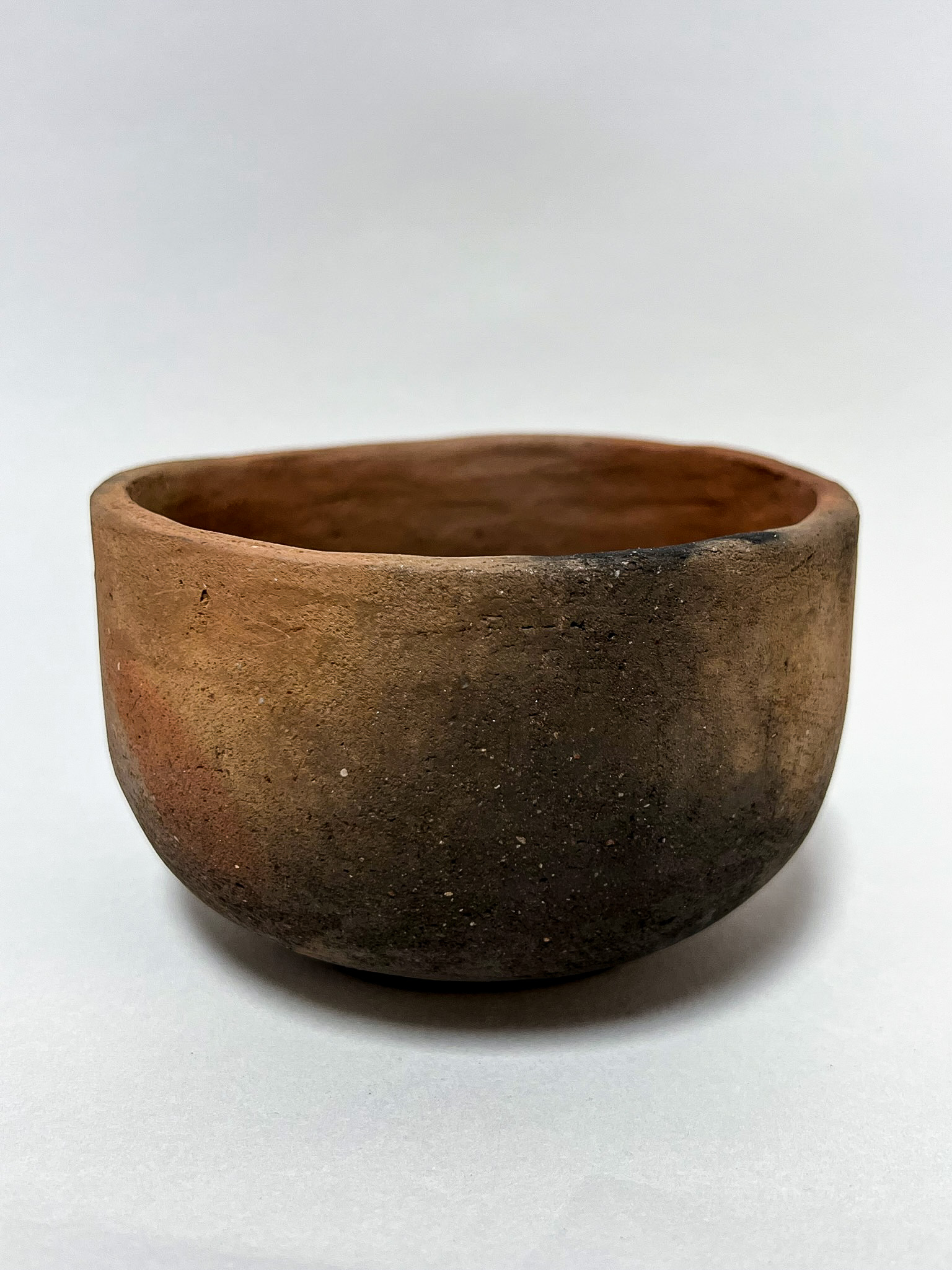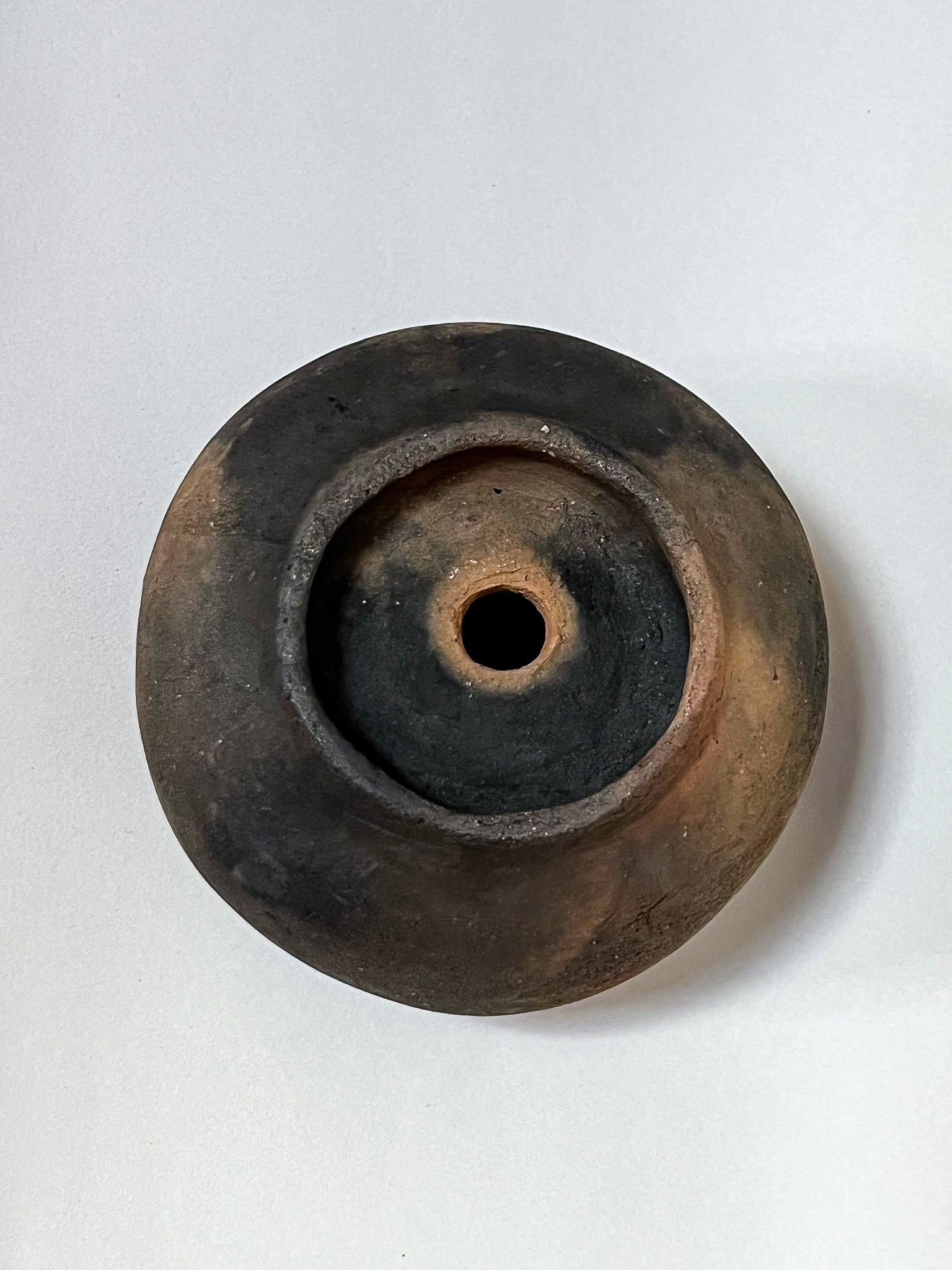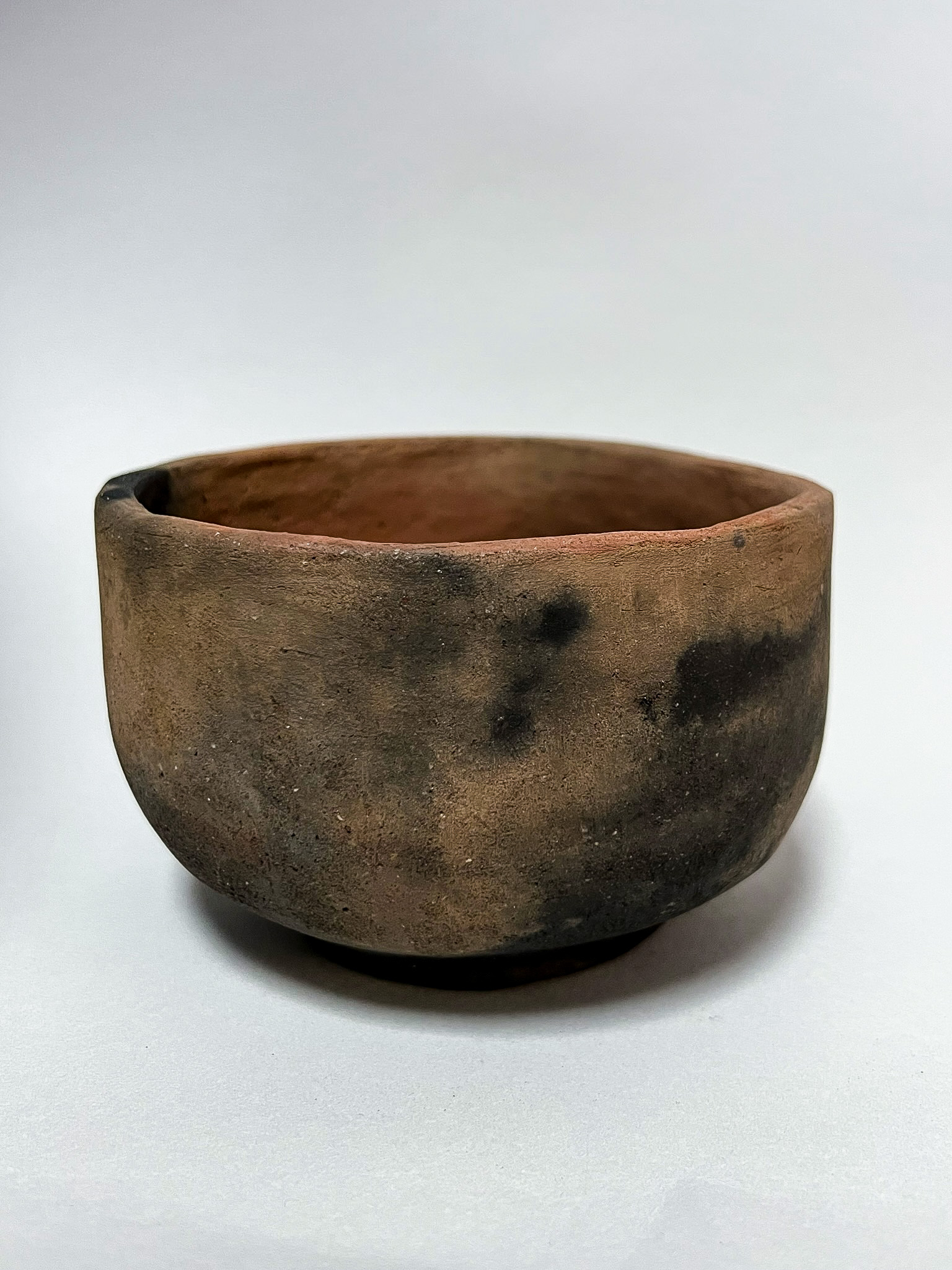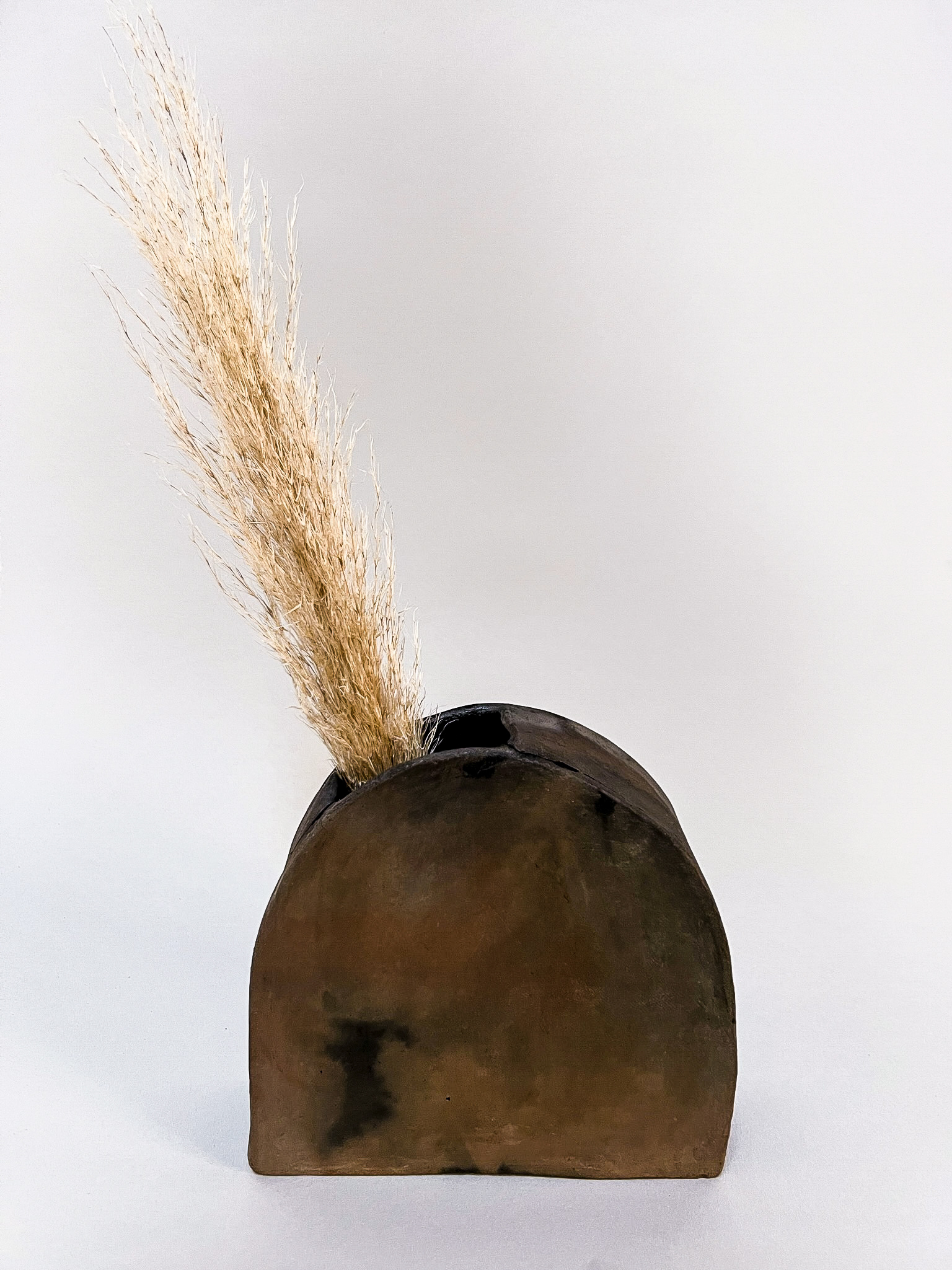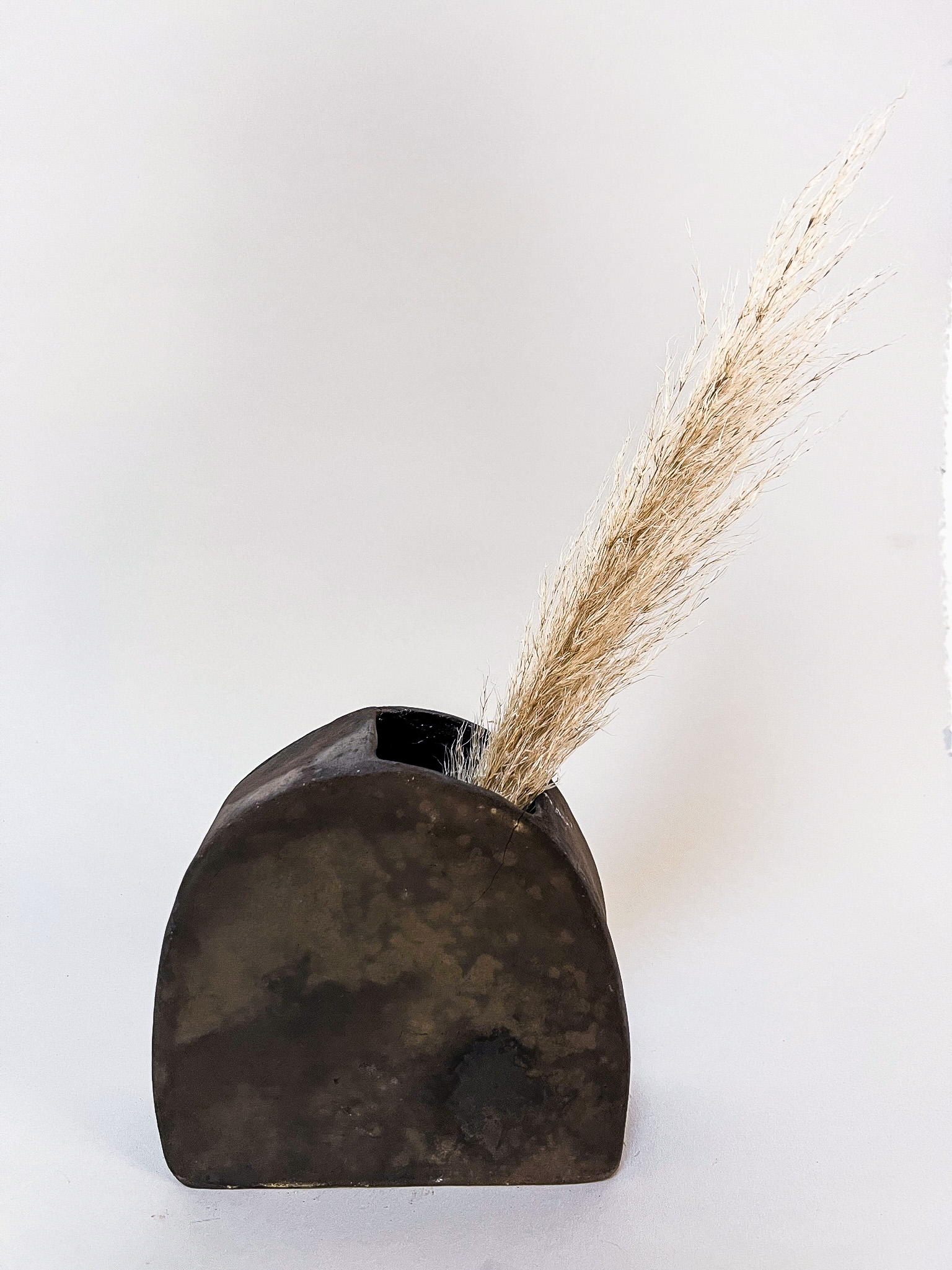Keegan
Luttrell
Ceramics in Tailhos
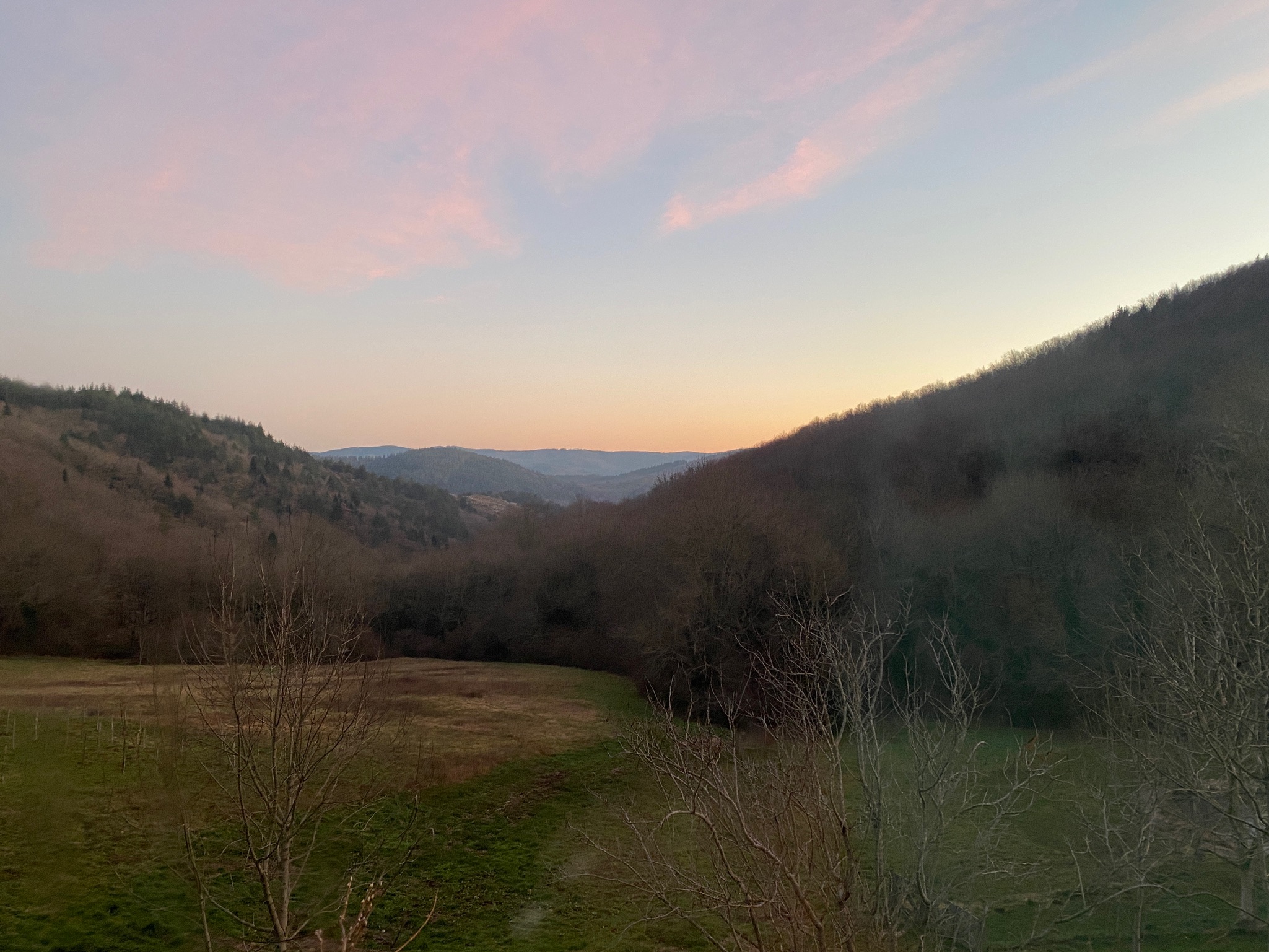
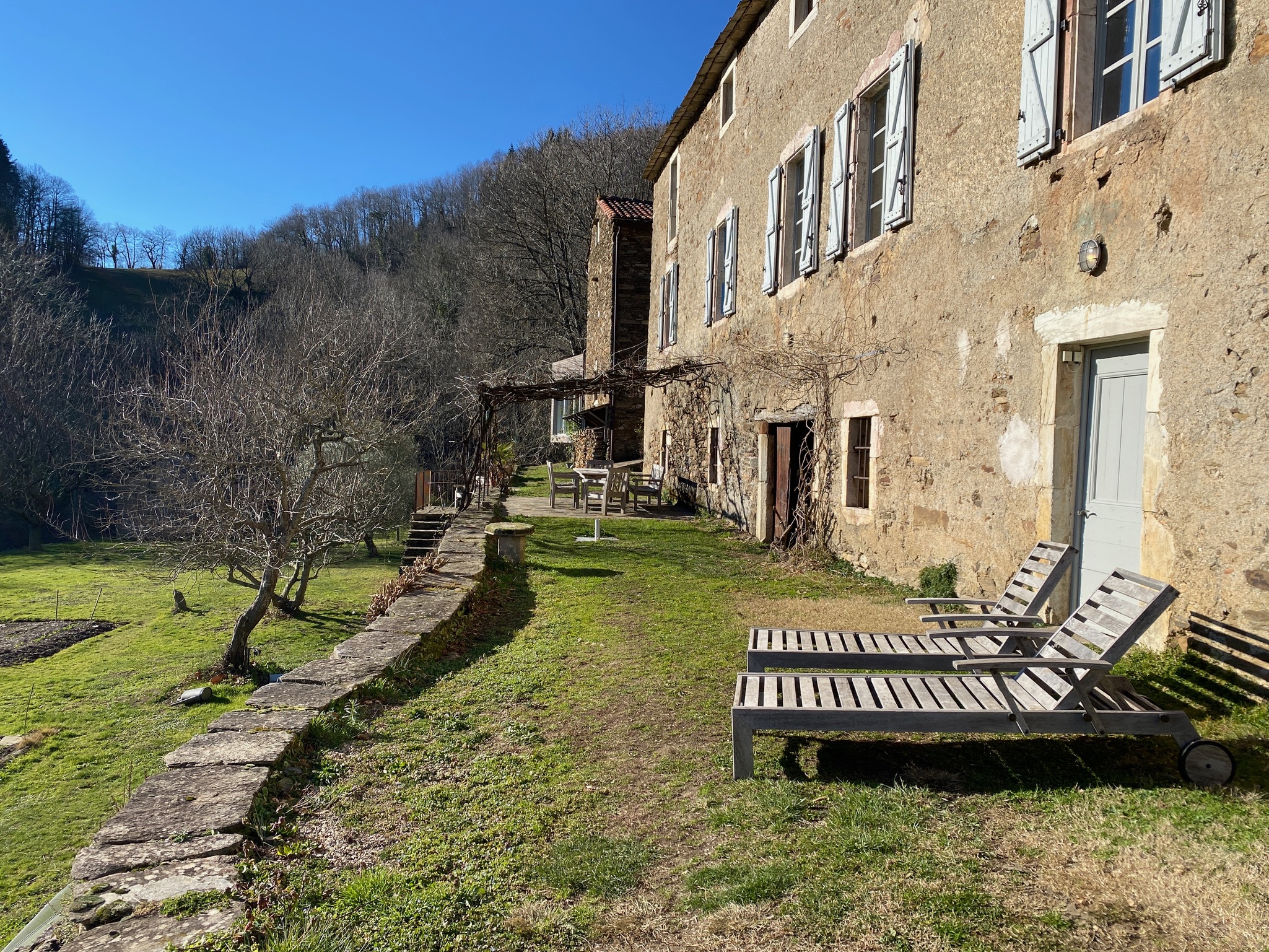
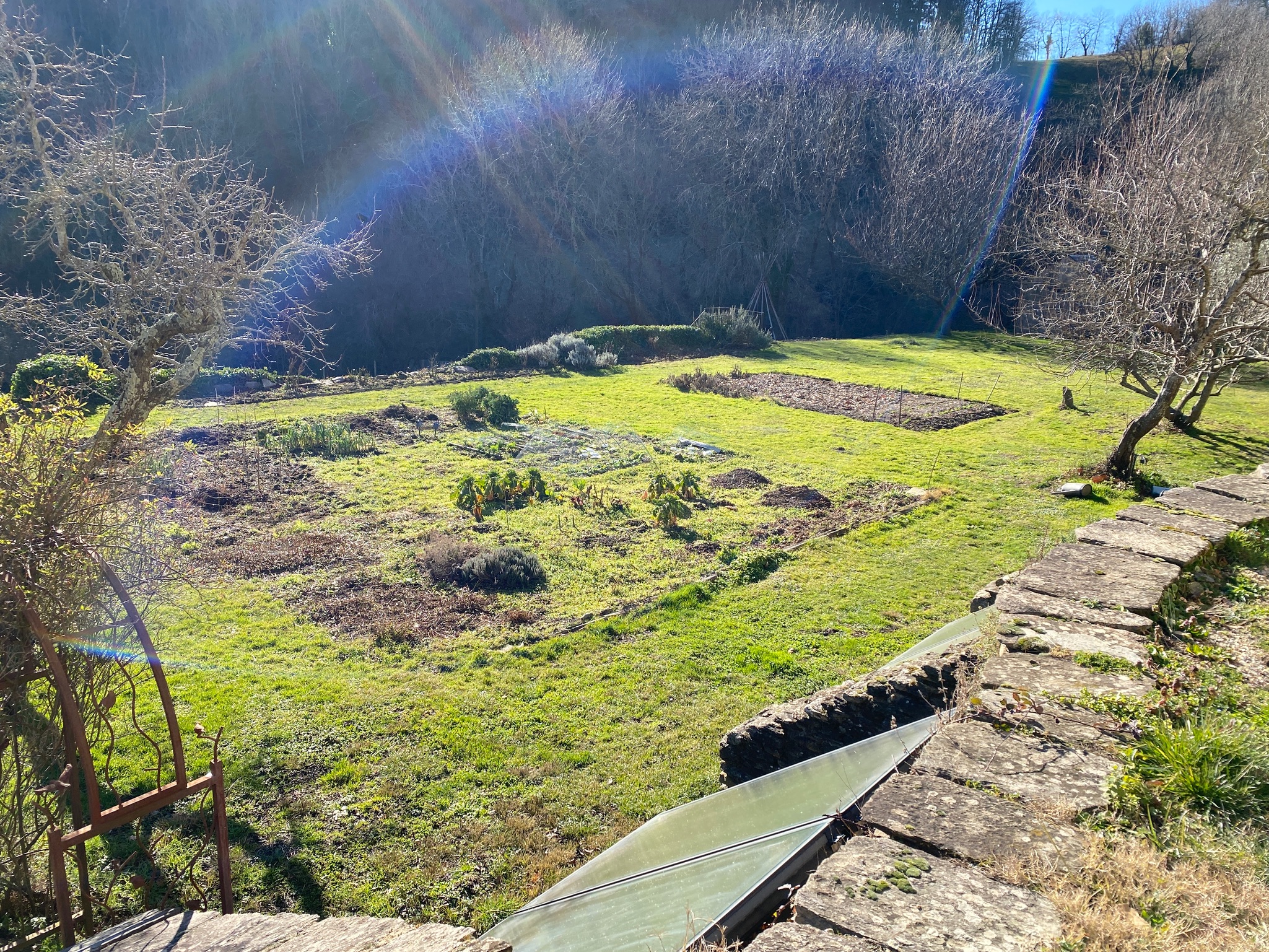
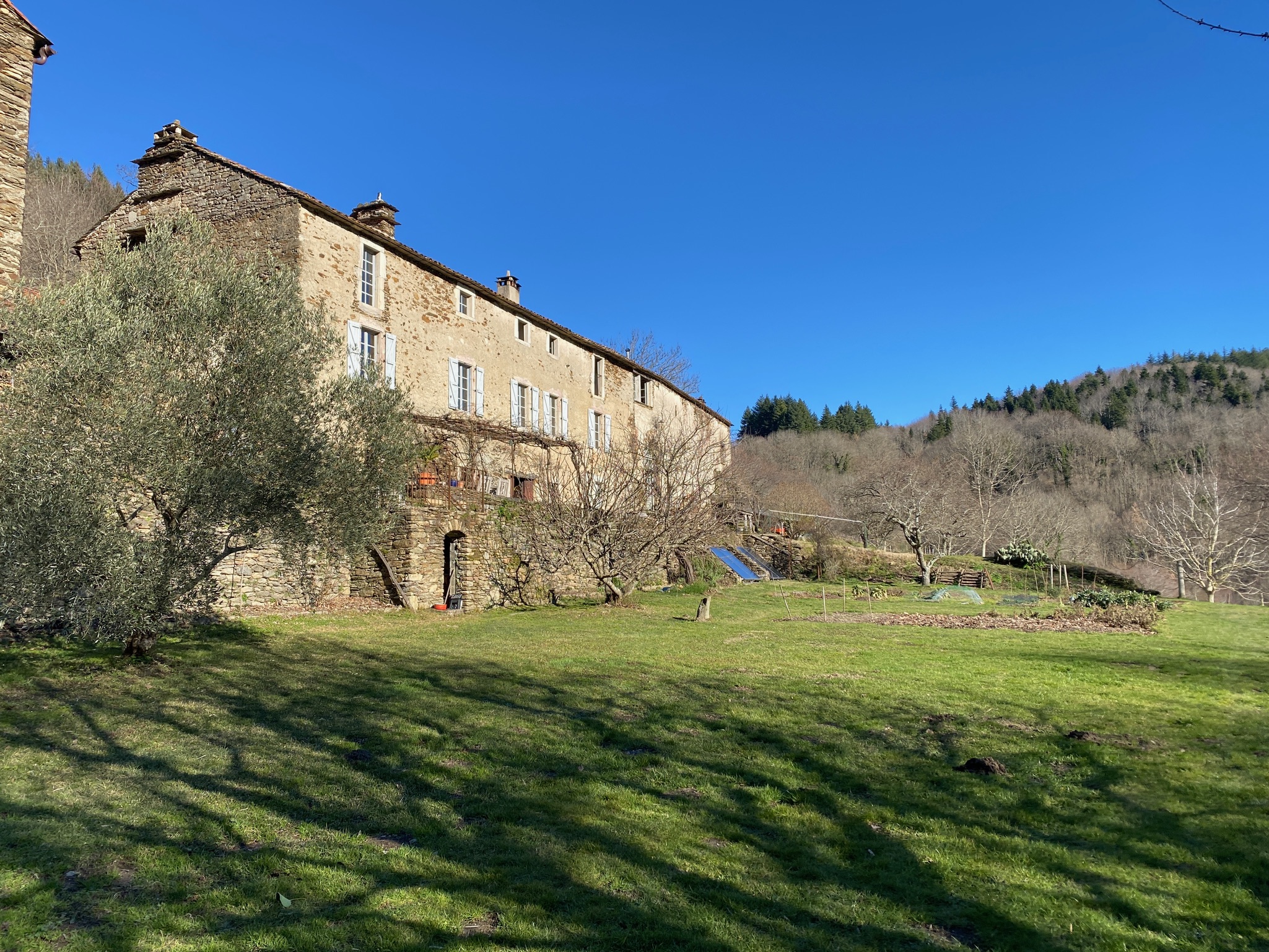

.
![]()
![]()
![]()
I needed to separate the rocks from the good stuff. Sumi helped me as I tossed her sticks along the way.
.
![]()
![]()
![]()
After the clay was covered with water for a few days and the sediment settled, it was time to sift the clay to remove the remaining rocks and larger particles.







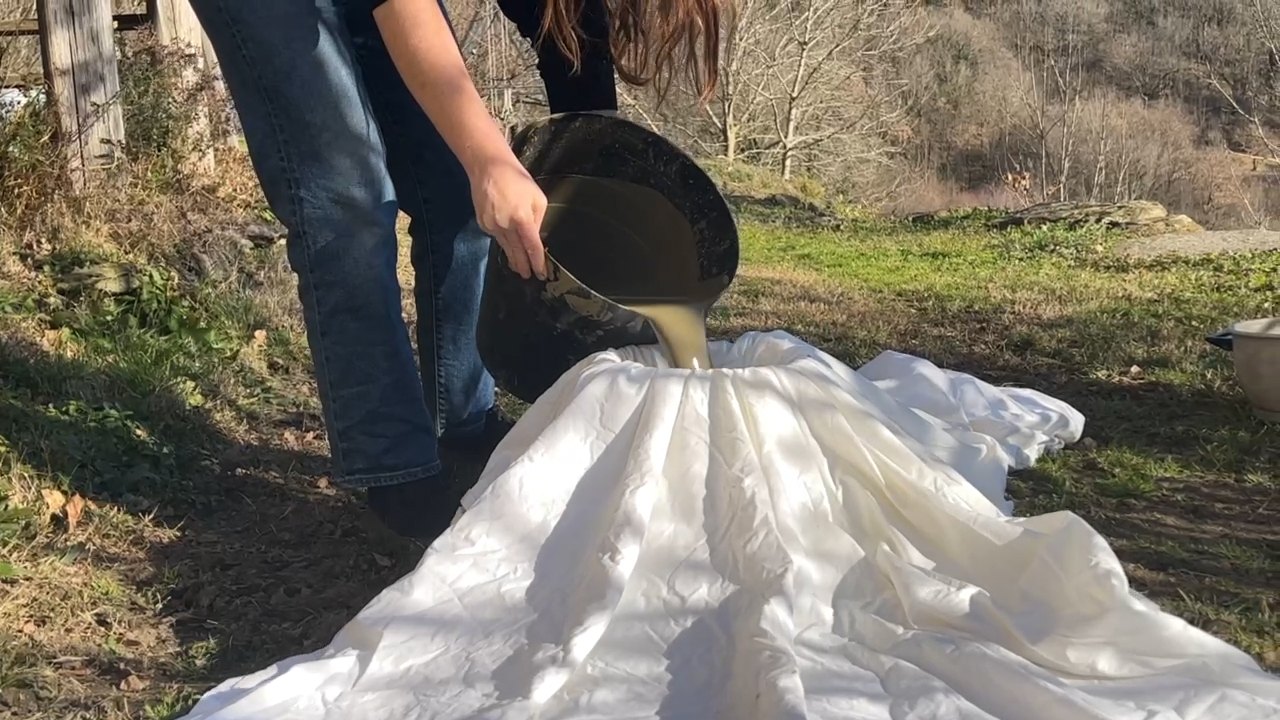
After sifting the clay through multiple passes, I poured the liquid clay into an old bedsheet that Sabine gave me and then hung it up on our patio so that the water could drip out of the clay. It took several days for the clay to get more solid. This was the longest part of the process. Once the water is removed from the clay it is laid out to dry. The amount that is usable significantly shrinks so I ended up harvesting two more batches of soil to produce more workable clay.
Once I had solid clay, I went to town and made several vases. Three were made by coiling (without a wheel). Two were made by slab building which actually proved to be a process that didn’t withstand the firing. I also made clay arrows for another project where I dropped them. Two weeks straight of studio time culminated in all of this work with clay that I harvested. If this was all I got from the process I was happy enough already! Now it was time for the firing.
However it rained for five days straight. We collected sawdust from a pile in the garden but it was extremely wet. It took four days to dry it all out which was a long unexpected part of the process. Meanwhile, my partner Robin and I collected orange peels, banana peels, avocado skins, egg shells, bones, ferns, wire, etc. and dried them out on top of our fire place. I wrapped the surface of the vases with all the dry goods hoping that the fruits would give coloring to the vases.

One of our last days in Tailhos we finally did the firing! I was very nervous as it was incredibly windy. We drilled holes in the side of the trashcan for airflow and filled it with rocks on the bottom. Then we added a layer of sawdust mixed with fire starters, mussel shells, pine cones, coffee, salt and then added each vase carefully into the can. I was worried that there wouldn’t be enough space for all of the vases because a 5 cm layer of sawdust is necessary between the stacked ceramics. We got all the vases in carefully and lit the fire. Sabine was there to help and so was Sumi! After a full day of watching the fire, we waited until it was cool enough to remove the vases. We washed off the vases to discover only one casualty that was totally glue-able! I was elated. I couldn’t believe that this process resulted in working vases (well almost working, adding water to one of them broke off the bottom, so for now dried flowers only and next time a better solution for making the greenware water tight). Below are the vases in all their glory. I gifted three of them to Sabine and Rainer, the bowl was a present for the other couple, Manon and Vincent, that were staying in Tailhos, and I took the vase with handles and the vertical slab built vase home.
Transforming clay with ones own hands is always a very connected experience - the medium lends that - but this exploration transformed my relationship to the material of clay and the specificity of place further than I could have imagined. To take the land and incorporate it into my work allowed for a more visceral and poignant connection to Tailhos. It was incredibly rewarding to connect to the environment of a place that was immensly enriching and important to me. There is still more to learn, but what an incredible ride.
A special thanks is in order to Sabine and Rainer for encouraging this process and helping gather all the supplies necessary for this to work. For Manon and Rainer who gave me the idea that “argile” might be residing on their terrace garden. For Vincent for his enthusiasm of the material. And for Robin who supported and helped me along the way. You are my rock. Also I couldn’t have done this at all without the moral support of Sumi!

